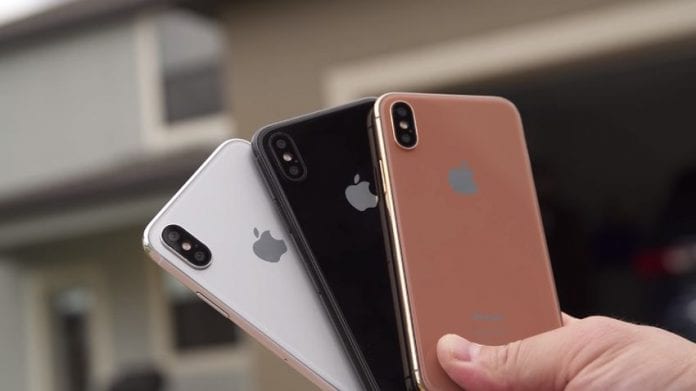Apple introduced three brand new iPhones a couple of days ago. Yes, you heard it right – three! Two of those are the iPhone 8 and 8 Plus, and they have better processors and cameras than the last year’s iPhone 7 models, plus you can use wireless charging now. Alongside those two phones, Apple launched the iPhone X, which costs $1,000 and it is a device from the future which arrived now.
The iPhone X is the first device in the lineup with an OLED screen and an edge-to-edge display. There is no home button, but the new feature called Face ID has been integrated, and it scans your face to unlock your phone. The iPhone 8 and 8 Plus still use the traditional Touch ID. You have been waiting for the new gadget to arrive, but now that three of them are here, and you certainly wonder which one is the best choice? We will compare all three models further in this article.
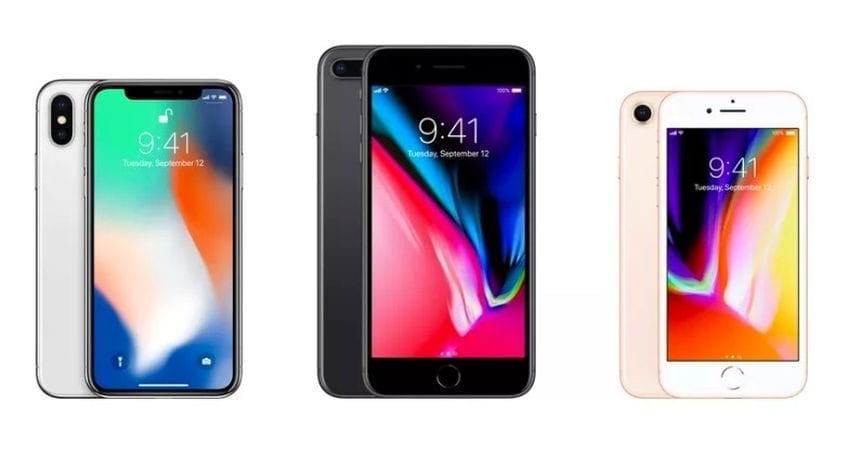
iPhone 8
The new iPhone 8 supports wireless charging, and the design of this gadget is slightly different than the look of its predecessor. Now, the new phone has a glass back side instead of aluminum, which means that you can just plop the iPhone 8 onto any Qi-compatible wireless charger and the magic will start. Some of the places where wireless charging is possible are Starbucks and some new vehicles, which support the Qi tech.
Moreover, the iPhone 8 comes with the same A11 Bionic processor like the iPhone X. It is the fastest chipset Apple has ever installed on a smartphone from this company. The new device is faster than the iPhone 7 which already felt fast. The new chip is optimized for the augmented reality tricks, of which you might have seen demos and those should make way to actual apps and games shortly.
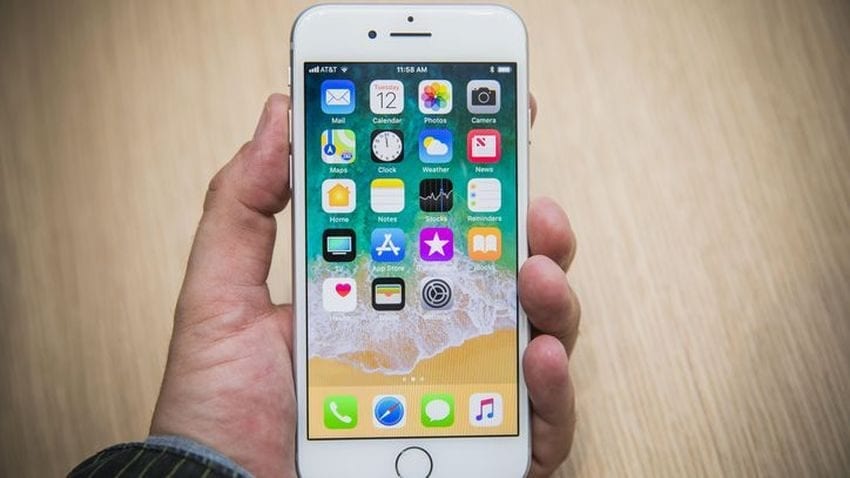
The primary camera is equivalent in all three phones – the 12MP f/1.8 unit with “larger and faster” sensor than the one used for the iPhone 7, says California-based tech giant. The camera has optical image stabilization and can record 4K videos at 24, 30 or 60FPS. The display supports Apple’s True Tone feature, which adjusts color temperature and screen’s appearance so that it isn’t harsh on your eyes. Last but not least, it is easy to handle, suitable for one hand and all of the iPhone 7 cases fit.
The downsides of the iPhone 8 are not dramatic, but they exist. Since it has only one camera, there is no Apple’s Portrait mode and new Portrait Lighting feature which changes the lighting of a subject’s face in the shot. The 4.7-inch screen has lower resolution (1334×750) compared to the iPhone 8 Plus and iPhone X. Also, the battery of the iPhone 8 is smallest of all three new devices, so the same battery life as the iPhone 7’s is expected.
iPhone 8 Plus
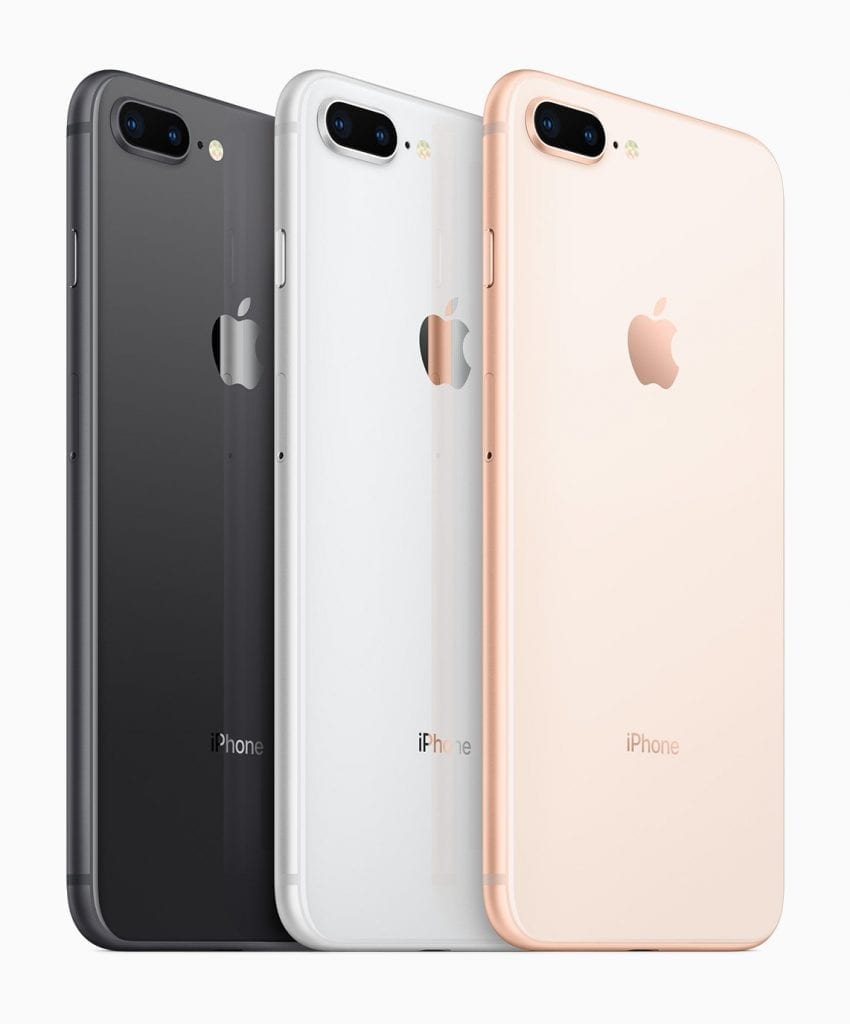
What separates the iPhone 8 Plus from the other two phones is size and weight. Other than that, the iPhone 8 Plus offers every single major new feature as the iPhone X does. The same processor, wireless charging, dual camera on the back with the ability to do the Portrait Lighting effects are all available. This model comes with a 5.5-inch LCD screen with True Tone. It has a home button and Touch ID, which can be both advantage and disadvantage, depending on how you look at it. If you love this feature, then it is good, but if you are always looking for innovations, this may not be the right device for you. However, this makes the phone easy to unlock without having to look at it. Moreover, the battery lasts the longest on the Plus model, while all the iPhone 7 Plus cases fit.
Because of its size, the iPhone 8 Plus may be difficult to handle from time to time. Even though the 5.5-inch 1080p LCD screen is fantastic with incredible color accuracy, it is just not as sharp and mesmerizing as the new OLED on the iPhone X. Moreover, the price is close to the $1,000 of the iPhone X if you are to select a 256GB iPhone 8 Plus, so you might as well go with the top-tier model.
iPhone X
When it comes to the design, the iPhone X is the most beautiful and futuristic smartphone Apple has ever created. It is mostly thanks to its 5.8-inch edge-to-edge OLED screen and the stainless-steel frame. The phone is not large, just slightly bigger than the iPhone 8, which means that it fits comfortably in one hand, but its screen will make you feel that you have the Plus model. And that is the beauty of the iPhone X. The OLED screen has better contrast than the displays on the other two phones, plus, it supports HDR video.
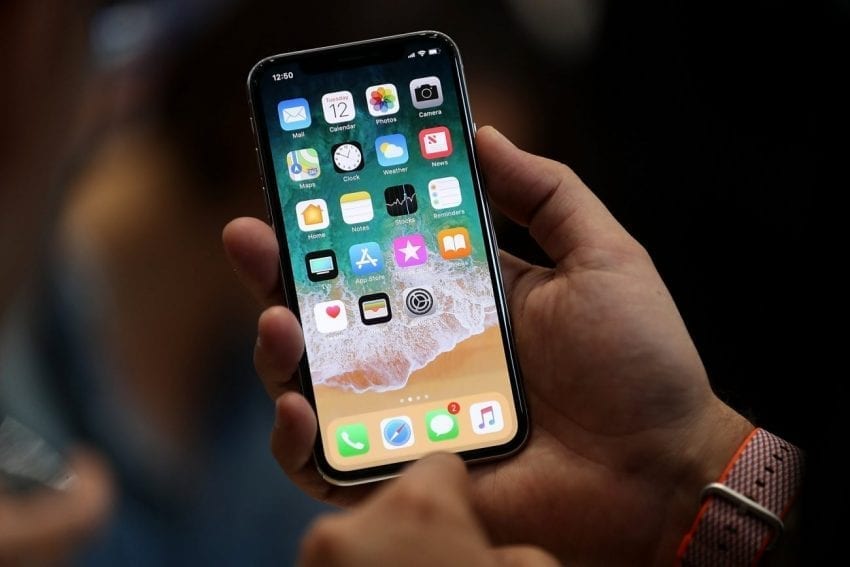
You unlock the device with your face, which is one of the largest changes and it will take some time getting used to the new cutting-edge technology. Meanwhile, there are Animoji and Portrait modes on the selfie camera, whereas all the sensors that make Face ID possible are also used for Animoji. For those that don’t know, Animoji are moving emoji which mimic your facial expressions, allowing you to take portrait shots with blurred backgrounds with the front-facing camera. Only iPhone X can do that out of the three. The new phone’s telephoto portrait lens on the dual-camera has better aperture than the iPhone 8 Plus, whereas both rear cameras come with optical image stabilization, unlike the iPhone 8 Plus, where optical image stabilization is used with the primary camera only.
The downsides are the price and the lack of a home button or Touch ID (As we have said, those who seek new and unique features might not consider this to be a flaw) because you need to look at your phone every time you want to unlock it. But, you can use the passcode and go old-school. Moreover, AppleCare+ is more expensive than for your previous smartphones, and you would have to wait until November to get your hands on the new iPhone X.
In the examples and early demonstrations, Apple’s gestures for going back to the home screen and multitasking seemed awkward, and they are more complicated than just touching a button with a thumb. Last but not least, the notch which houses the front-facing camera and other sensors is just standing there. There is a possibility for the notch to obscure content from time to time. For example, if you want to play the videos full-screen in landscape orientation, the notch just sticks out. It is hard to ignore.
Some of the features are common for all three phones. First of all, they have the identical primary 12MP camera and 7MP selfie camera with the same video recording capabilities. Moreover, wireless charging is now available for all three devices, whereas they all come with IP67 water and dust resistance and the same maximum screen brightness. iPhone 8, iPhone 8 Plus and iPhone X are offered with 64GB and 256GB storage options, while 3D Touch and fast charging are standard features for the entire lineup.
If you don’t mind having a smaller screen and one rear camera, the iPhone 8 is the best option. Choosing one of the three phones is a subjective decision, and it depends on what you are looking for. Objectively speaking, we would have to rule out the iPhone 8 and leave the iPhone 8 Plus and iPhone X in the race. The only reason to not go with the iPhone X straight of the bat is that it lacks the home button and Touch ID. That is why the ultimate winner is iPhone 8 Plus. But tastes differ, so, please state your opinion in the comment section and tell us which one is your favorite.
